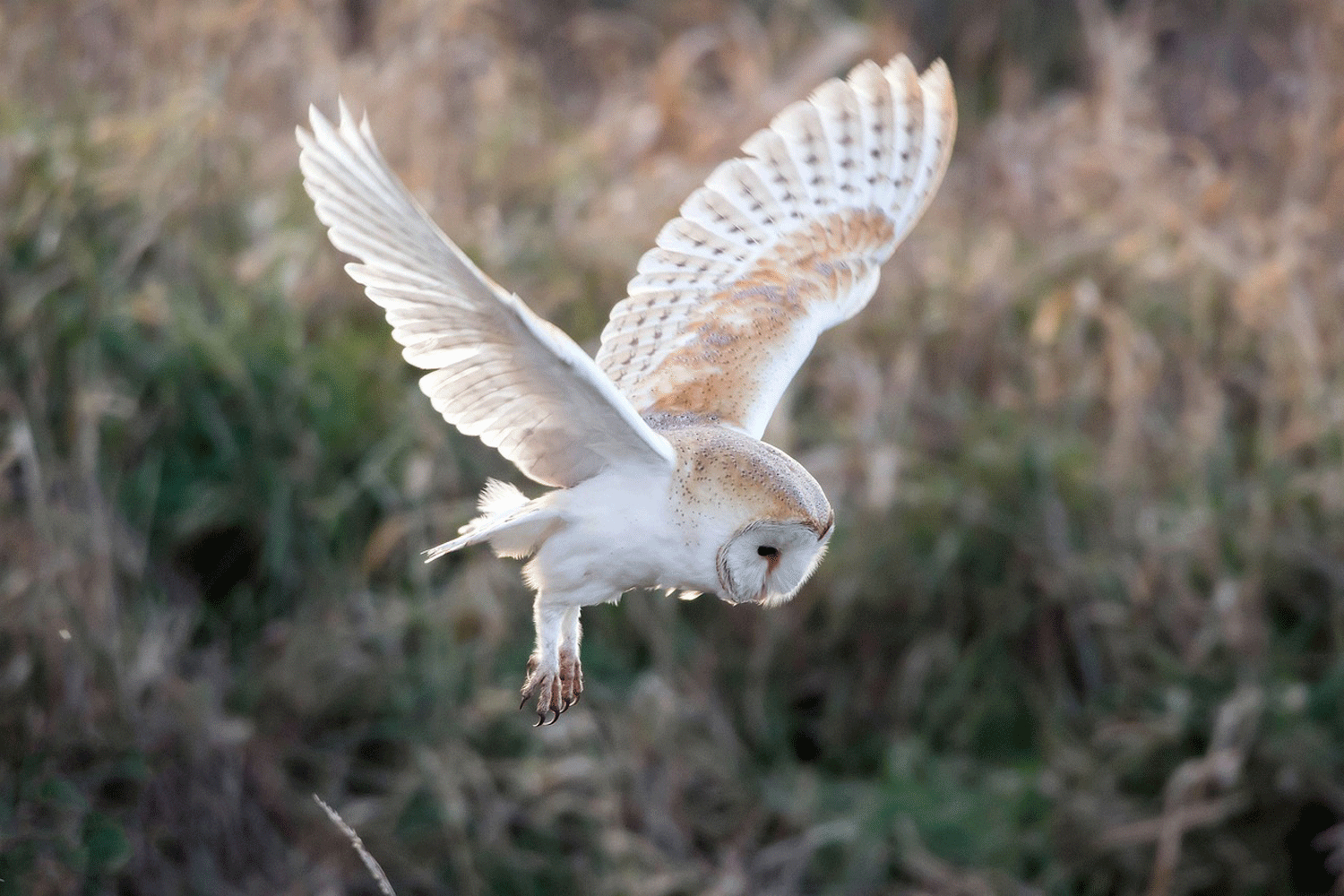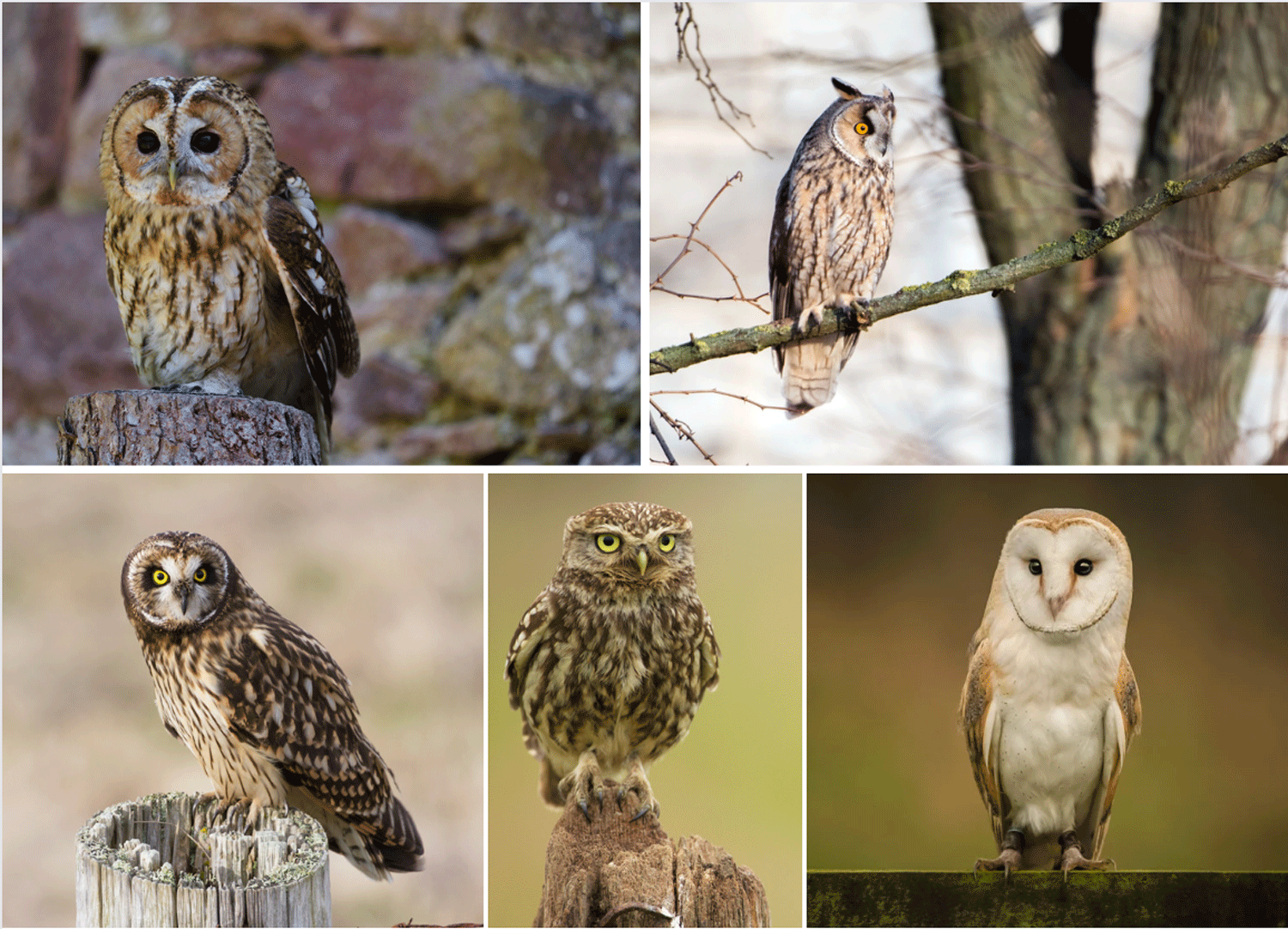
Owl facts
Owls, with their round heads and large forward-facing eyes, are one of Britain’s most recognisable species. There are five species of owl in Britain, including the Barn owl, Tawny owl, Little owl, Short-eared owl and Long-eared owl. The Tawny owl is the most common owl species in Britain.
Owls can famously turn their head through 270 degrees and are able to look behind them. Although owls have binocular vision, their forward-facing eyes cannot move in their sockets, so they must turn their heads instead.
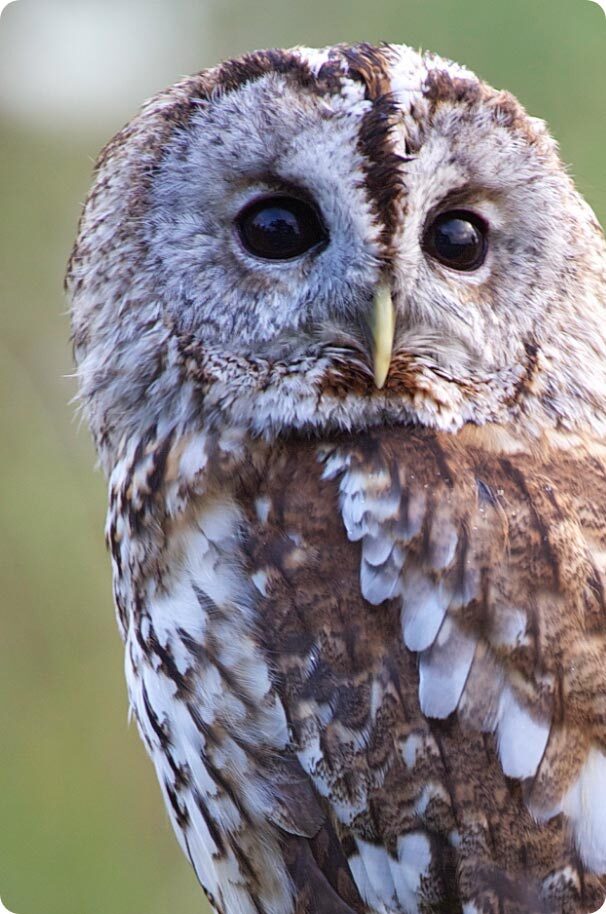
Tawny Owl (Strix Aluco)
The tawny owl is a familiar sight in Britain’s woodland, parks and gardens. The ‘too-wit too-woo’ call often referred to as being the song of the generic owl, is that of the tawny owl. But it isn’t the call of a single bird, but instead made by a male and female calling to each other.The female makes a ‘too-wit’ sound and the male answers with ‘too-woo’!
Length: 37-39cm
Wingspan: 99cm
Weight: 420-520g
Average lifespan: 4 years
Diet: Small animals like voles and mice, they also enjoy earthworms and other insects
UK Conservation status: Amber
When to see them: All year round
Interesting Fact: Tawny owls dislike large bodies of water, which is why they're absent from the UK's surrounding islands, including Ireland.
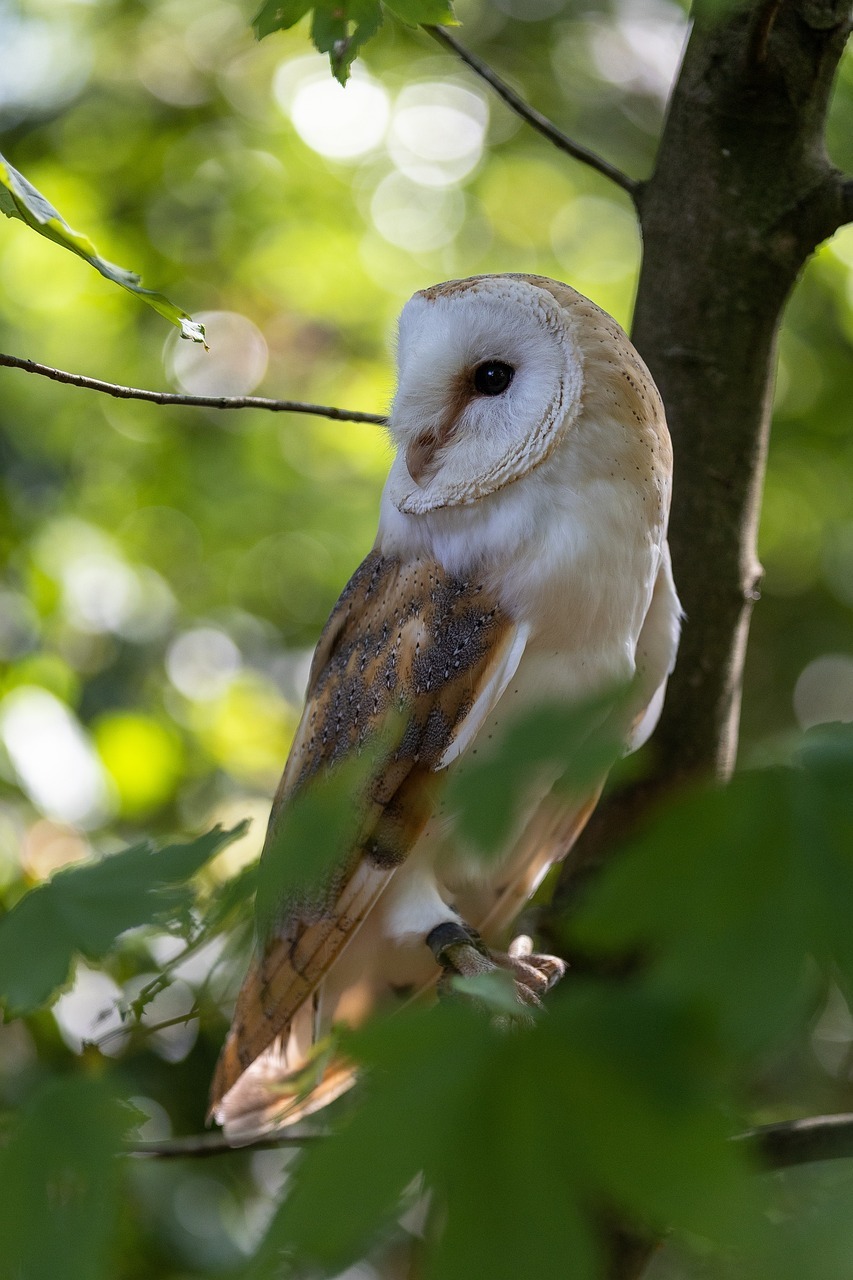
Barn Owl (Tyto Alba)
Barn owl's are perhaps our most familiar owl, they will sometimes hunt in the daytime and can be seen 'quartering' over farmland and grassland looking for its next small-mammal meal. However, it is perfectly adapted to hunt with deadly precision in the dark of night.
Length: 33-39cm
Wingspan: 89cm
Weight: 300g
Average lifespan: 4 years
Diet: Small animals like voles and mice.
UK Conservation status: Green
When to see them: All year round
Interesting Fact: Their heart-shaped faces direct high-frequency sounds, enabling them to find food amongst the vegetation.
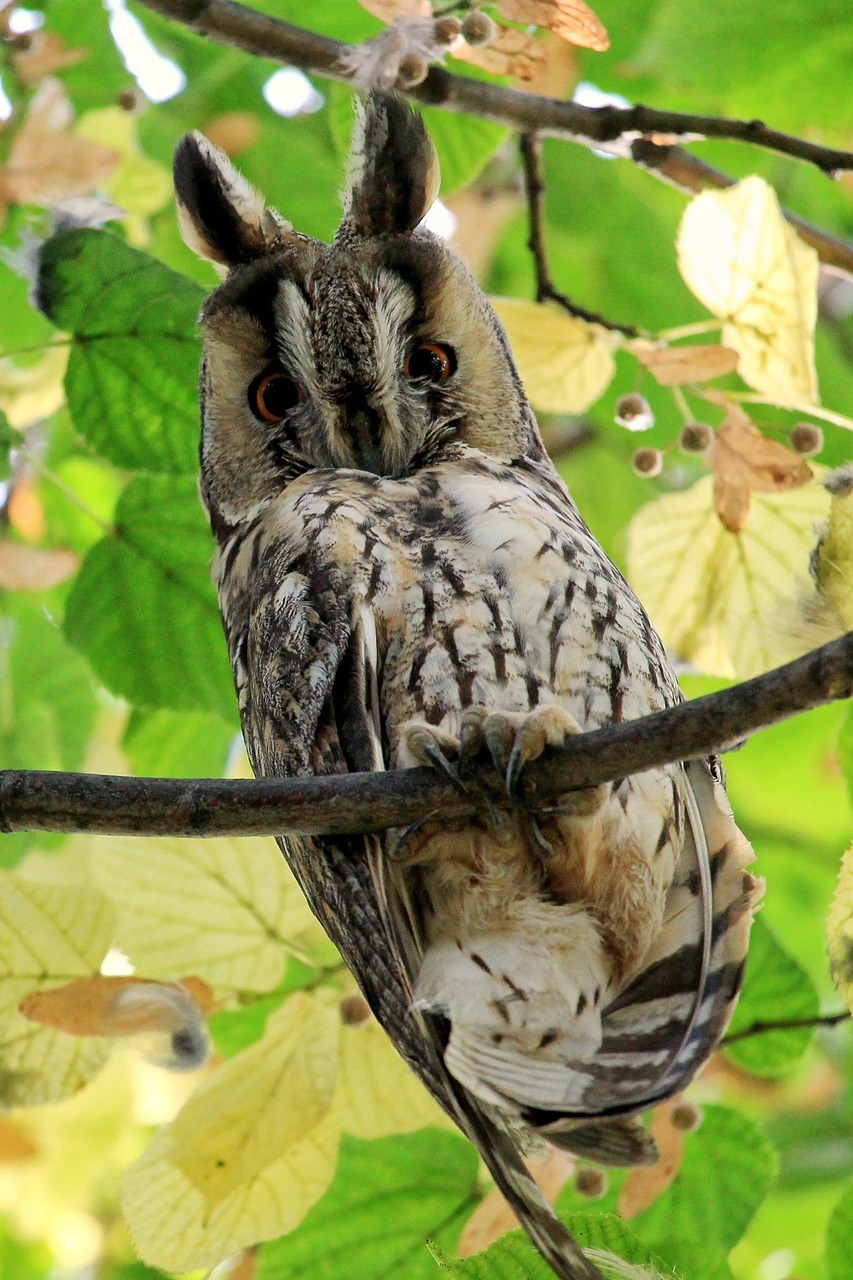
Long-eared owl
Long-eared owls are shy, nocturnal birds of coniferous forests, plantations and mixed woodlands and can be seen in communal roosts of more than 20 birds. The long-eared owl hunts out its prey by sweeping clearings and fields in a zig-zag flying pattern, scanning the ground for movement.
Length: 35-37cm
Wingspan: 95cm
Weight: 290g
Average lifespan: 4 years
Diet: Predominantly voles but small birds are also favoured.
UK Conservation status: Green
When to see them: All year round
Interesting Fact: The 'ear' tufts of long-eared owls are not actually ears at all, but feathers that can be raised when the owl is alarmed, or wants to make itself look bigger.
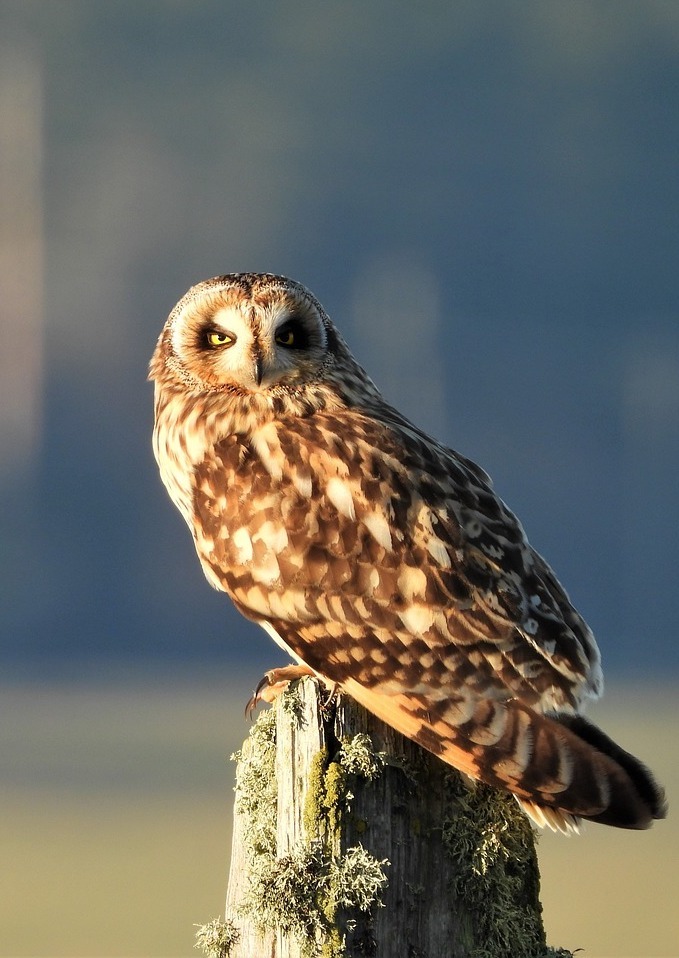
Short-eared Owl
The short-eared owl, or 'Shortie', is an unusual owl because it prefers to be out and about in the daytime. It is most easily spotted in winter, when resident birds are joined by migrants. Look out for it over moorlands and saltmarshes.
Length: 34-42cm
Wingspan: 1metre
Weight: 330g
Average lifespan: est. 4-12 years
Diet: Field voles and small birds.
UK Conservation status: Amber
When to see them: All year round
Interesting Fact: Some short-eared owls migrate here from Scandinavia, Russia and Iceland for the winter and can occasionally be seen flying in off the sea.
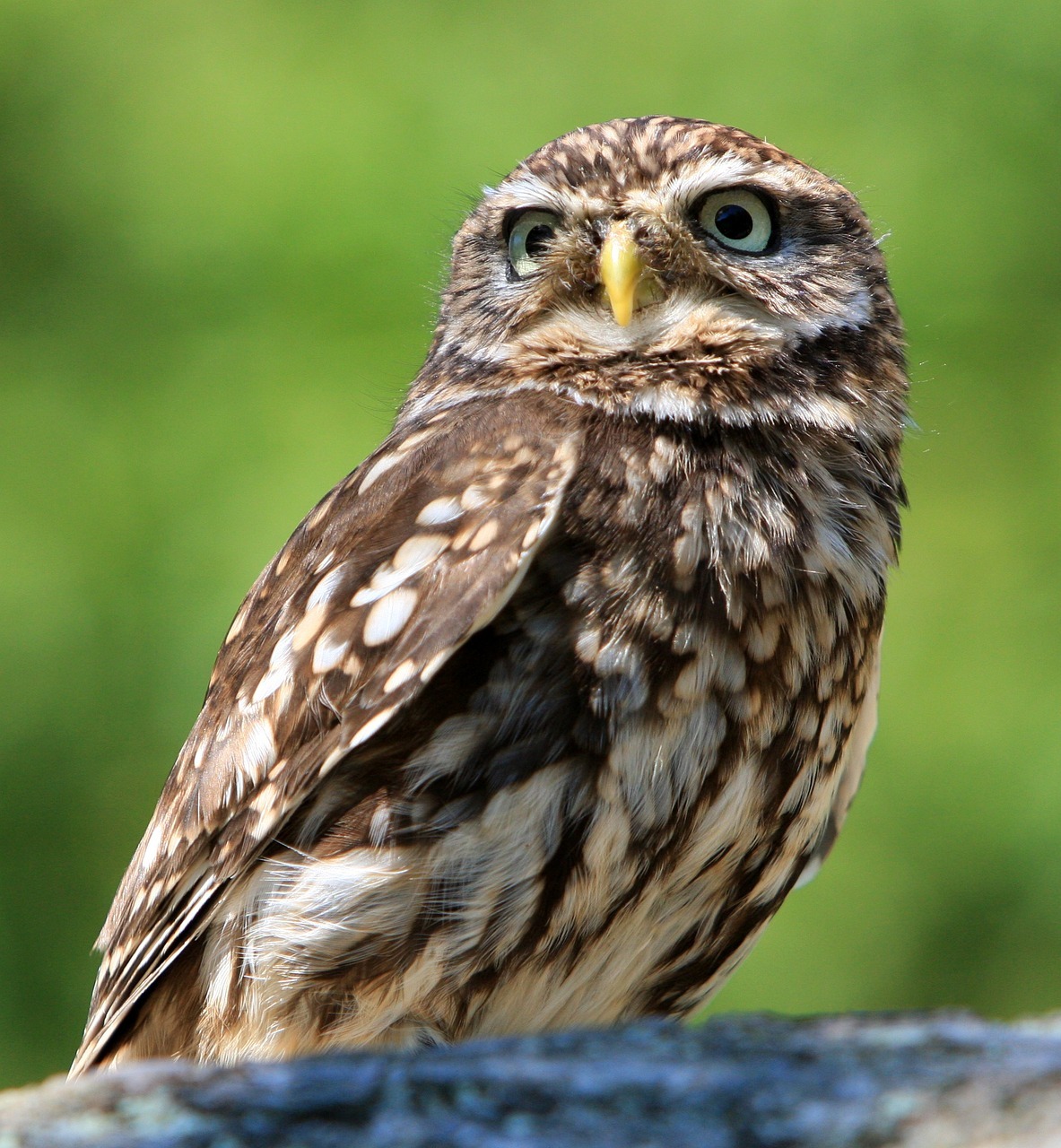
Little Owl
The UK's smallest owl, the diminutive little owl can now be seen along hedgerows, on farmland and in parkland across England and Wales. Little owls are crepuscular hunters finding their small prey at dawn and dusk. Often they can be seen sitting on fences or branches with a distinctive head bobbing action.
Length: 21-23cm
Wingspan: 56
Weight: 180g
Average lifespan: 3 years
Diet: Invertebrates (especially worms), small mammals, reptiles, amphibians and small birds, plant material and berries.
UK Conservation status: Introduced, non-native species
When to see them: All year round
Interesting Fact: The little owl was introduced to the UK from the continent in the 19th century.
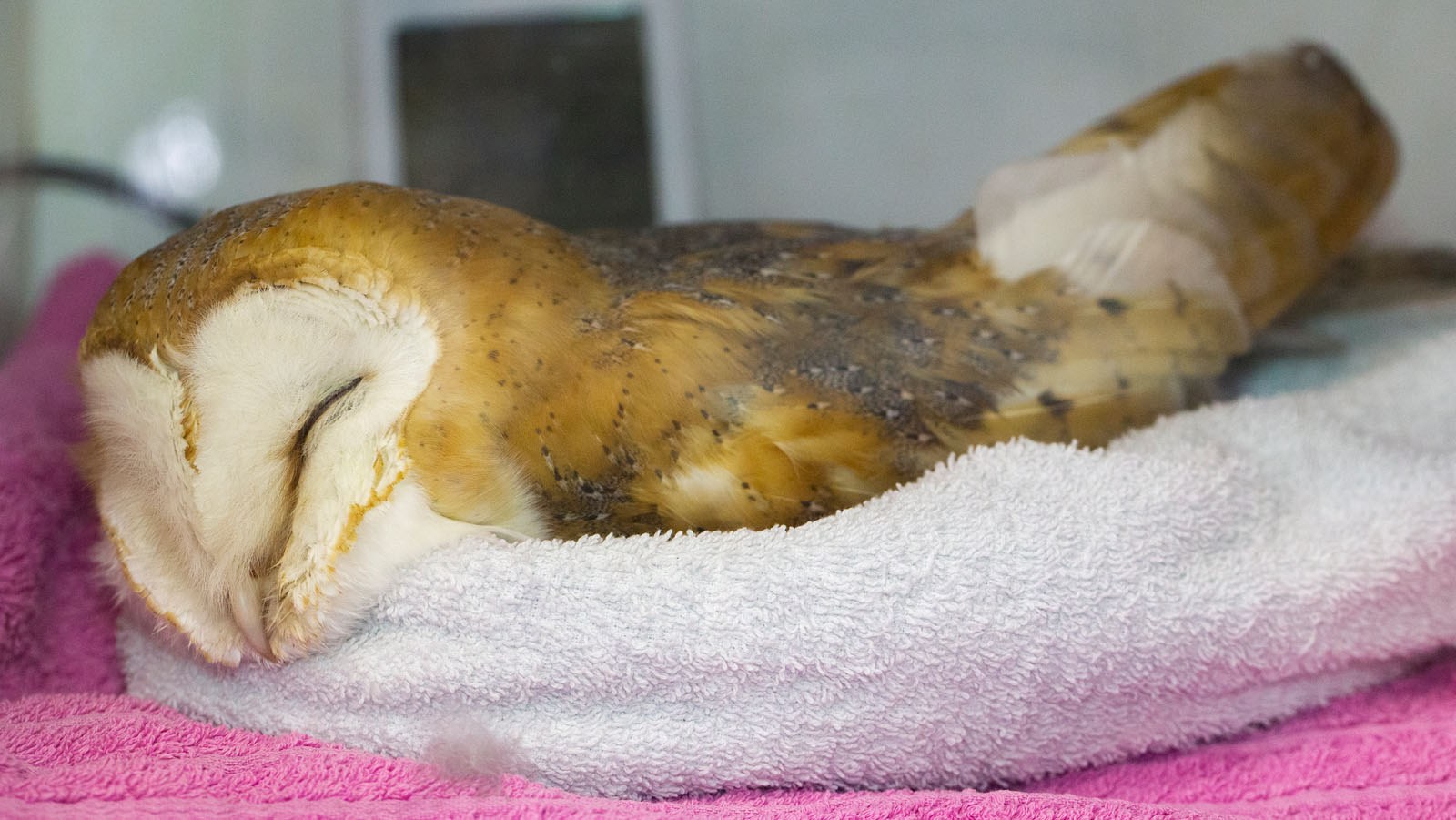
Threats
> Change in habitat: The development of urban land impacting the owls’ nesting territory; in some cases, such as with Barn Owls, the removal of derelict buildings is reducing the areas in which they can nest.
> Pesticides: An owl's prey consumes vegetation with the pesticide on it and the owl digests the prey, causing sickness and loss of life.
> RTA (Road Traffic Accidents): It is estimated that between 3000-5000 owls are killed on UK roads, every year.
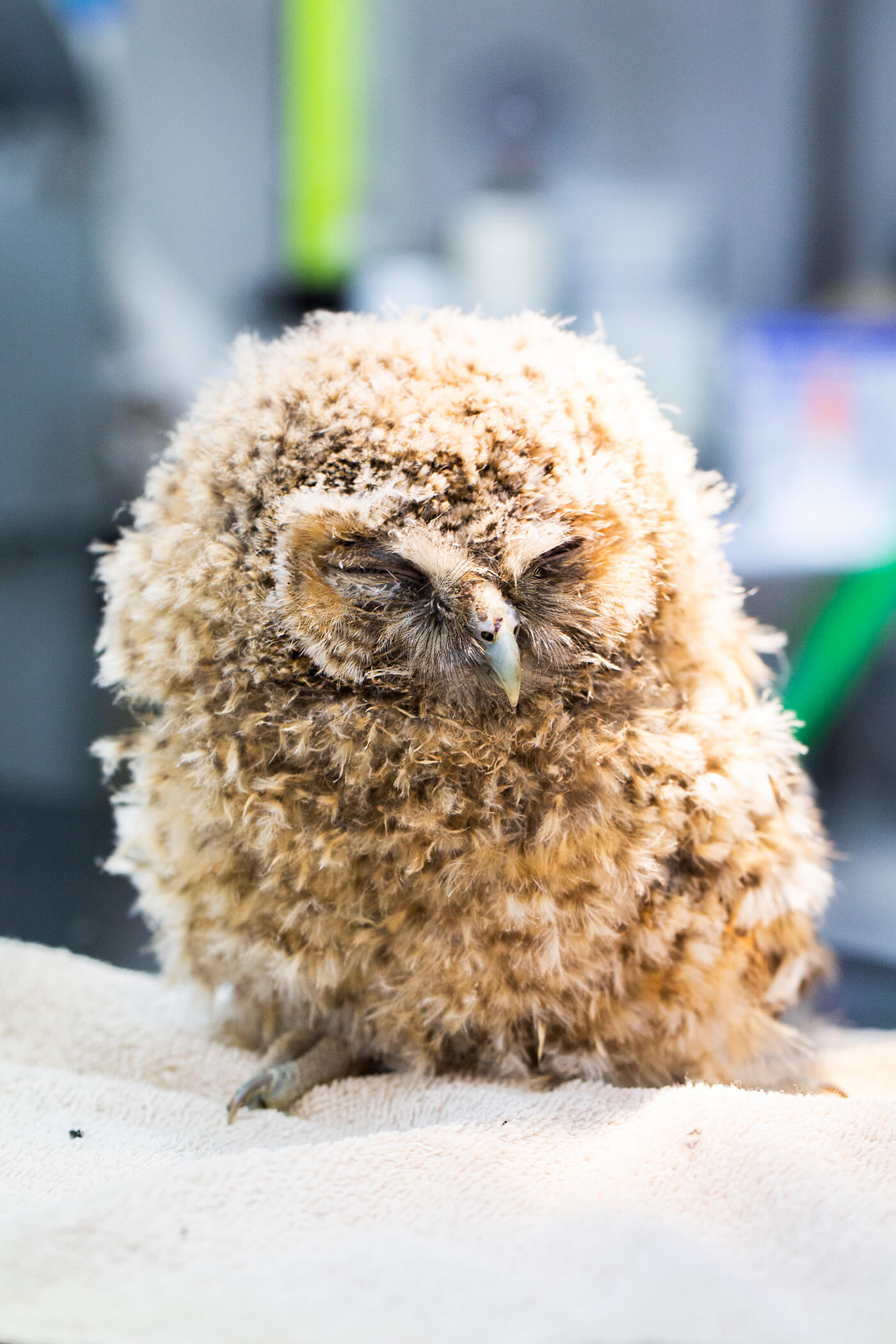
How you can help
You can do the following to help all UK owl species:
> Allow plants to regenerate naturally to encourage invertebrates and small mammals to provide a food source.
> Avoid cutting back thick hedgerows and allow a layer of shrub to develop around garden edges can help provide safe hunting sites.
> Slow down on roads at dusk and dawn.
> Avoid using pesticides that could affect prey species of owls.
Frequently asked Owl Questions
Young owls often carry out a behaviour known as 'branching', where they can climb vertically up a tree trunk back into the nest, so you should leave them where they are unless they're in a position of danger. If the owlet is in danger, place them in the tree or off the ground only a short distance away.
If the owlet is injured or lethargic, place it into a warm box and transfer it to your nearest wildlife rescue or vet.
**Watch out for it's talons**
The bird is probably concussed, and likely injured. Being mindful of it's talons, place it in a dark, ventilated box, and take it to your nearest wildlife rescue or vets.
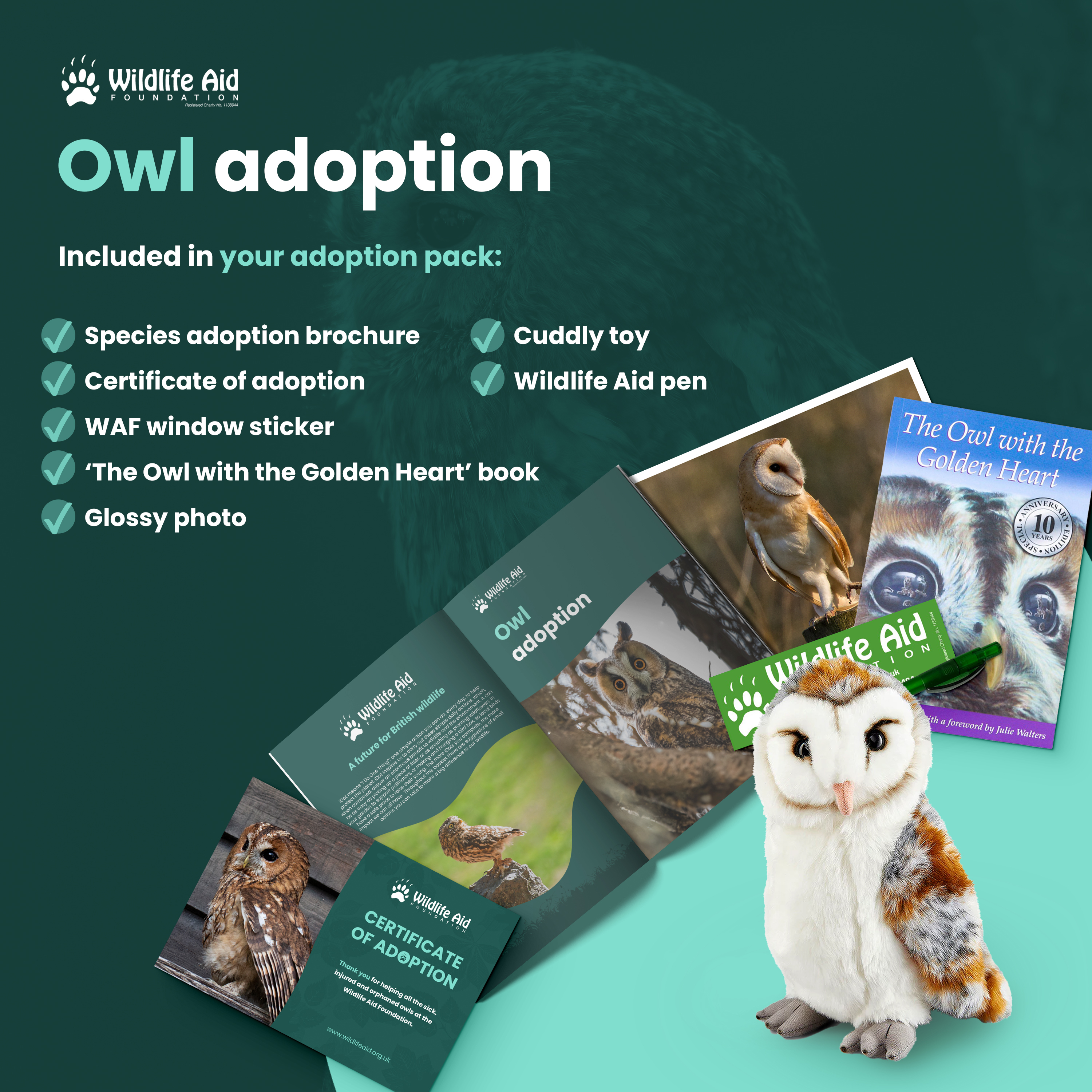
Adopt a Owl
By adopting a Owl with the Wildlife Aid Foundation, you will be providing vital funds to support the rescue and rehab of injured, sick and orphaned animals. For just £3 per month, your kind adoption will help provide the expert care, treatment and food they require before they are safely returned to the wild – where they belong.
And that's not all. As a owl adopter, not only will you be providing invaluable care and helping countless animals, but you will also receive an exclusive owl adoption pack, including cuddly toy, species brochure, certificate of adoption, photo, annual updates and more.
